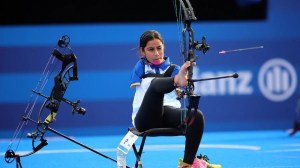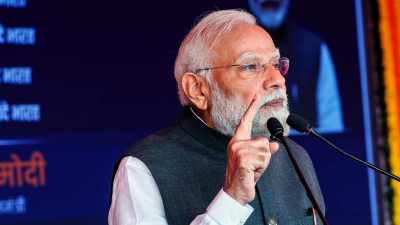Prime Minister Narendra Modi chaired his first meeting of the National Board for Wildlife (NBWL) at the Gir National Park in Junagadh district on Monday, where he announced plans to expand Project Cheetah to Gandhisagar Sanctuary in Madhya Pradesh and Banni Grasslands in Gujarat.
Modi made a slew of announcements, including on starting the Asiatic Lion population estimation exercise in May, setting up a centre for effective management of human-wildlife conflict, and new conservation initiatives for gharials and Great Indian Bustards. The PM also reviewed the government’s flagship wildlife conservation programmes like Project Lion and Project Cheetah.

This was the seventh meeting of the NBWL, the apex body on wildlife conservation and development. The last full-body NBWL meeting, with its 47 members including Chief of Army Staff, was held on September 5, 2012, and was chaired by then PM Manmohan Singh. The PM is the ex-officio chairman of the NBWL.
Story continues below this ad
It is the standing committee of the NBWL, chaired by the Union Environment Minister, which has largely steered crucial decisions on wildlife policy and diversion of land in and around parks and sanctuaries.
“Recognising the dwindling population of gharials and with a view of ensuring the conservation of gharials, the PM announced the initiation of a new project on gharials for conservation,” the Prime Minister’s Office (PMO) said in a release.
Further, the wildlife board approved Rs 2,900 crore for various conservation works under Project Lion for the next 10 years, and announced a National Great Indian Bustard Conservation Plan as well as a scheme for conservation of tigers outside tiger reserves.
Under Project Lion, the government aims to increase the range of Asiatic Lions throughout the Saurashtra region. Population estimation of Asiatic Lions is carried out once every five years. The last such exercise was carried out in 2020.
Story continues below this ad
It is not clear whether the new plan for bustard conservation will dovetail with the existing long-term recovery plan or it will be a new scheme.
Under Project Cheetah, the wildlife board decided to expand introduction of cheetahs to Gandhisagar Sanctuary in Madhya Pradesh and Banni Grasslands in Gujarat.
Modi also released the report on the first-ever riverine dolphin estimation conducted in the country, which revealed that there are 6,327 riverine dolphins across the Ganga, Brahmaputra and Indus river basins.
During the meeting, the board also discussed the issue of human-wildlife conflict at length, sources said, and Modi announced the establishment of a centre of excellence for effective management of human-wildlife conflict. The centre will be located at the Wildlife Institute of India campus at Salim Ali Centre for Ornithology and Natural History in Coimbatore.
Story continues below this ad
“The Centre will support the states and Union territories in equipping rapid response teams with advanced technology, gadgets for tracking, forewarning; prescribe surveillance and intrusion detection systems in human-wildlife conflict hotspots; and build capacity of field practitioners and community to execute conflict mitigation measures,” the PMO said.
“Prime Minister chalked out a roadmap for wildlife conservation strategy and future actions for the ministry and also asked to constitute various task forces to work on Indian sloth bear, gharial and Great Indian Bustard conservation and development,” it said.
Modi also laid the foundation stone of the National Referral Centre for Wildlife at Junagadh, which will function as the hub for coordination and governance of various aspects related to wildlife health and disease management.
During the review meeting, Modi asked the NBWL and the ministry to gather traditional knowledge and manuscripts of various regions of India with respect to conservation and management of forests and wildlife for research and development.
Story continues below this ad
He stressed on the usage of remote sensing and geospatial mapping and Artificial Intelligence & Machine Learning to combat issues like forest fires and human-animal conflicts, the government release said.
The meeting, held at the Sinh Sadan Guest House at Gir National Park, lasted for nearly 90 minutes, sources said. Senior officials of the Union Environment Ministry gave presentations on the progress of Project Lion, Project Cheetah, Project Tiger, Project Snow Leopard, Project Elephant, Project Dolphin and on conservation of national parks and sanctuaries.
The meeting also saw a discussion on the International Big Cat Alliance (IBCA), which Modi had launched in April 2023 for global conservation of seven big cats. Modi is learnt to have stated that India should maintain its leadership role for big cat conservation.
“The Prime Minister made detailed interventions on a wide range of issues and stressed on participation of local communities for wildlife conservation, forest fire management and the need to respect and document local traditional knowledge. He observed that the local community of Maldharis have played a crucial role in lion conservation. He also added that wildlife conservation should not be left entirely to the government and that community participation was key,” said Professor Raman Sukumar, a non-governmental member of the NBWL.
Story continues below this ad
Before the NBWL meeting, Modi went on an early-morning safari at Gir Wildlife Sanctuary.









